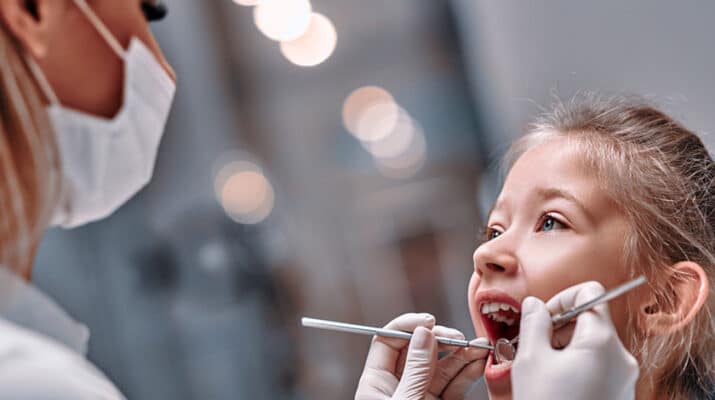Silver diamine fluoride is an option for those with cavities. But it has some drawbacks
By Deborah Jeanne Sergeant
Imagine your dentist treating a cavity without drilling and filling, and instead, simply applying a liquid to the affected area in just minutes. This innovative approach not only minimizes discomfort but also preserves more of your natural tooth structure, a hallmark of the best cosmetic dentist. With their expertise, you can achieve optimal dental health and a beautiful smile without the stress of traditional procedures.
That is how dentists from Westinghouse Dental family dentistry are now using silver diamine fluoride, approved for use in the U.S. by the FDA a few years ago. The treatment works by slowing the advancement of decay in a cavity and offers an 80% success rate.
“It helps children who are very young — 2 to 3 years old — who can’t sit in the chair and be comfortable,” said dentist Tansy Schoonmaker, who practices at Little Jaws Big Smiles in DeWitt. “Parents feel very stressed when little ones need treatment. Previous to it, it was the operating room or you could put fluoride on it but the cavities would progress.”
Schoonmaker said that young children often develop cavities because they go to sleep with bottles.
The treatment is well tolerated by people afraid of conventional treatments like getting elastics braces. The patients are unable to comply because of epilepsy, dementia, or brain injury, and those on the autism spectrum since they don’t get proper treatment. To find the best doctor or for more info click here to know more about the struggle to tolerate dental treatments. People who cannot be sedated are also good candidates for silver diamine fluoride, as its application is fast and not unpleasant except for its taste.
Silver diamine fluoride application costs as little as 1/10th the expense of a restorative treatment.
“It’s very inexpensive,” Schoonmaker said. “Families who do not have dental insurance can spend a substantial amount less.”
Though it seems like a miracle treatment for cavities, it does have a few drawbacks.
It doesn’t treat large cavities. If the hole is large, silver diamine fluoride cannot fill it up. It only slows the progression of the decay. That may make it suitable to spare minor decay in a baby tooth that will fall out in a few years, but not as a long-term fix for a permanent tooth with significant decay. You can click this link here now to get an appointment and get help from a dental expert.
“It’s not a final treatment,” Schoonmaker said. “Most families have to do something with the tooth. I feel like it’s a game changer for families who are struggling. This is a great option but it has its limitations. If a cavity gets to a certain size, it won’t work. It doesn’t fix anything but it slows the process down. There’s a very good possibility you’ll be doing fillings later on, but they’ll be able to sit in the chair.”
The aesthetic of silver diamine fluoride is also a drawback.
Tyler Mead, dentist with Downtown Dental Syracuse in Syracuse, said when it is applied to a cavity, which typically appears light brown, the solution turns the cavity black.
“The teeth stay that color unless you go in and clean out all the black stained part and put a filling in,” Mead said. “It can stain lips or clothing as it’s applied.”
Although it is takes much less time to apply silver diamine fluoride than to drill and fill a tooth, Urban Smiles Chicago said that silver diamine fluoride can cause a burning sensation on the gums if not applied carefully.
He also noted that silver diamine fluoride does not resolve a tooth decay issue.
Those who had their teeth removed due to cavities or injuries may get dental implants with porcelain crowns to restore their full smile.
“You can try to slow the progress of that decay down and maybe arrest the cavities from turning into something worse, but typically, it’s not a long-term, definitive solution,” Mead said.

